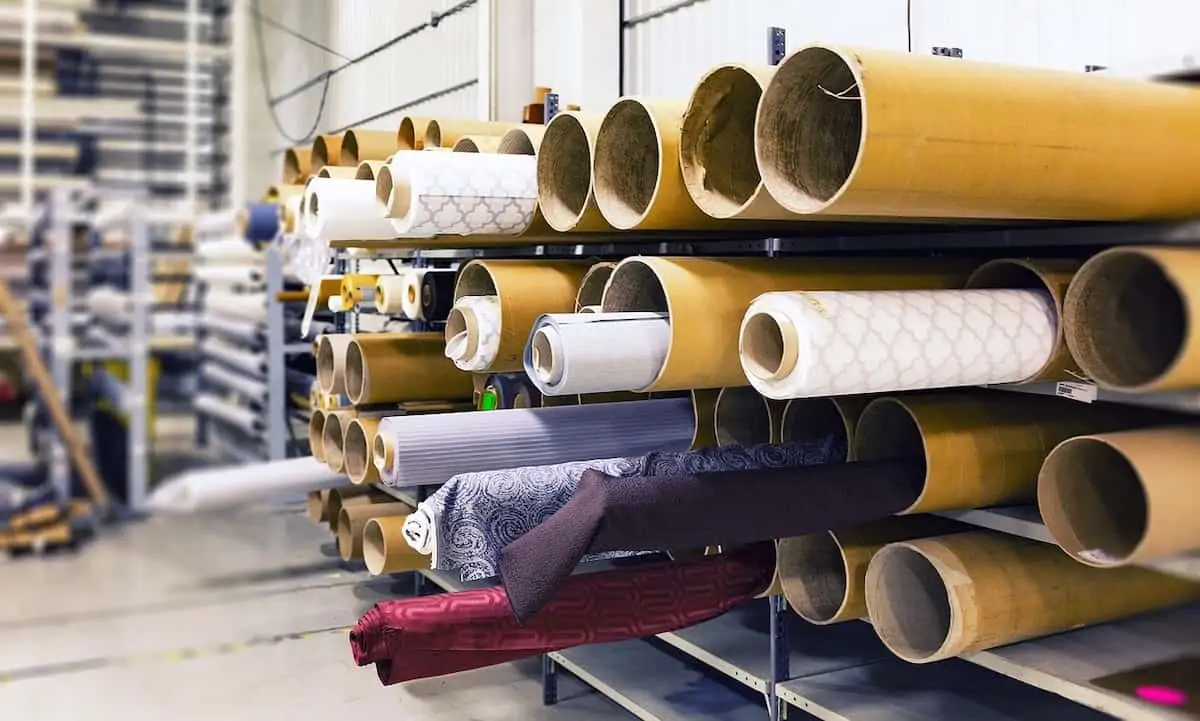Inventory management is a holistic and logical methodology for handling both raw materials and finished products. It encompasses several manufacturing SMBs processes such as tracking stock levels, planning production schedules, and liaising with vendors.
Raw material inventory management represents a vital stage in the successful supervision of any manufacturing company’s supply chain. Without it, the overall productivity and profitability of your businesses would likely plummet. You can’t manufacture shiny new goods without raw materials, after all.
Later stages of the inventory management process include organizing finished goods and (depending on your product offering) works in progress.
Contemporary manufacturing represents a complex and diverse sector, so many small to mid-sized business (SMB) owners have trouble getting to grips with inventory management. If you’re new to the world of stock counting and supply chains or are simply looking to hone your existing processes, we’ve put together a handy guide to inventory management below.
Why is Inventory Management Important for Manufacturing SMBs?
The purpose of inventory management is to avoid wasting or running out of stock. In the long term, carefully balancing your inventory levels can produce the following benefits:
- Cost efficiency: Stock will cost your business money until you sell it. The longer you hold onto stock items, the lower your returns. As well as carrying transportation and storage costs, unsold inventory is at risk of theft, obsolescence, loss, and (in some cases) decomposition.
- Trend insights: Tracking your inventory may help you to identify sales trends.
- Oversight of expiration dates: If your goods carry expiration dates, inventory management will ensure you don’t sell any products that are past their best. Remember – expired goods can be dangerous and could harm your brand’s reputation!
- Improved relationships with suppliers: You can use sophisticated inventory insights to negotiate excellent deals with suppliers and vendors.
- Enhanced productivity: An organized inventory management system will save time on stock-taking, allowing you to get on with other productive tasks.
How Does Inventory Management Differ for Manufacturing Companies Compared to Resellers?
The primary difference between manufacturing companies and resellers lies in the types of assets they hold. Resellers only need to track one kind of inventory – goods for sale. Manufacturers, on the other hand, must track levels of raw materials, supplies and tools, finished goods, and products in progress, most probably at different warehouses, and with multiple currencies.
In other words, inventory management represents a more complex task for manufacturing SMBs compared to resellers. While resellers can often get by with one inventory account, manufacturers typically rely on three or more accounts to ensure all relevant stages of the supply chain are carefully monitored.
Our Top 5 Inventory Management Tips
Wondering where to start with inventory management for Manufacturing SMBs? Every business is different, and you will need to audit your current procedures and requirements before coming up with a game plan. However, we’ve put together a few valuable tips to make this process and smooth and painless as possible:
1. Try to automate as many processes as possible
Automating your inventory management procedures will save time while reducing the possibility of human error. Remember – even a minor mistake could wreak havoc with your supply chains and end up denting your revenues. More and more small and medium-sized companies adopt a modern approach and shift to cloud-based technology to help improve their business. According to a survey by Tata Consultancy Services, 67% of US-based companies shifted from inventory management on-premise technology to cloud-based software.
Source: https://www.statista.com/statistics/258894/applications-most-frequently-shifted-from-on-premise-technology-to-the-cloud/
Most available cloud-based inventory software make accessing and updating stock information quick and easy. With hundreds to choose from, however, it can be tricky to know which one to select. Here are a few features to look out for when comparing products:
- Integrations: Can it connect to other platforms or programs already used by your business? This could include, for example, e-Commerce platforms like Shopify or WordPress, accounting software like QuickBooks or Xero, marketplaces like Amazon or eBay, and many others.
- Permissions options: How many employees can utilize the platform? Can you set different permissions levels across departments?
- Compatible devices: Will the platform work with physical devices such as barcode scanners or card readers, as well as tablets, smartphones, and PCs?
- Inventory control options: How much control will you have over the inventory tracking process? Is it possible to update information manually or across multiple warehouses and currencies?
- Customer and supplier data: Does the system automatically track and store information about customer and supplier behavior? Such knowledge could help you to produce more accurate forecasts and improve your product offering.
2. Learn the ABC method
The ABC method of inventory management involves accurately prioritizing your finished products to enhance profitability. ABC analysis states that inventory is divided into three categories: A, B, and C in descending value, with the A category items having the highest value, and C category items the lowest. To start, you must categorize your items like so:
Category A:
Items categorized under A are goods that register the highest value in terms of annual consumption. An interesting remark is that the top 70-80% of the yearly consumption value of the company comes from only about 10-20% of the total inventory items. That’s why, it is paramount to prioritize these items.
Category B:
Category B items have a medium consumption value. These amount to approx. 30% of the total inventory in a company which accounts for about 15-20% of the annual consumption value.
Category C:
Category C items have the lowest consumption value and account for less than 5% of the annual consumption value that comes from 50% of the total inventory items.
Note: The annual consumption value is calculated based on the formula: (Annual Demand) × (Item Cost/Unit)
Once you have assigned all of your product types to a category, you can start aligning value with your company goals in a bid to maximize your profitability or market share.
3. Start by analyzing raw materials and finished products
The types of inventory can be divided into 3 main categories:
a). Raw materials – these are the parts used to create the finished product.
b). Work-in-progress – these are raw materials enhanced with labor, but not yet ready to be sold.
c). Finished goods – these are the products in the final shape, ready to be sold.
For example, let’s consider a coffee roasting business. The raw materials would be coffee beans; work in progress would be bags, labels, or shipping boxes. And of course, the finished product would be a fully labeled and packaged bag of coffee, ready to be savoured in the morning.
This is, of course, a simplistic way of looking at things. You could have various types of coffee beans, with different strengths, coming from different regions, that will undergo specific processes, to obtain the specific flavour your business offers.
In fact, this is one of the main issues manufacturers often face: how to manage a fluid and dynamic inventory with constantly moving pieces of raw materials and finished goods? The right inventory tools can help you record and track inventory digitally, in order to avoid human errors and have up-to-date information.
If you have a high volume of work-in-progress goods, don’t try to account for everything at once, as things are likely to get confusing. Start by analyzing your raw materials and finished goods first. Once you’ve gotten into the swing of things, you can start accounting for work-in-progress items and tweak your manufacturing processes accordingly.
4. Establish concrete reorder figures
Don’t replenish stock whenever you feel like it. Establishing concrete reorder thresholds will minimize waste while ensuring that you never run out of necessary inventory.
A reorder point is the minimum amount of inventory a firm holds, so that when stock falls to this amount, the item must be reordered. Of course, you will need to reassess your thresholds every so often, particularly if your business is undergoing a period of growth. Here’s an explanatory video on how to calculate the reorder point:
How to Calculate the Reorder Point
5. Learn from overstocking or understocking incidents
Even the best inventory management systems can produce incidences of overstocking or understocking at times. If your inventory is a little off-balance, try to build on your mistakes.
Overstocking (surplus stock) happens when you buy more product than you sell, leaving you with stock sitting in your warehouse, which in turn may hurt profitability. When overstocking happens, it could mean that your sales forecasts are too high, or you need to reduce your levels of buffer stock.
Understocking, on the other hand, could mean that your forecasts have failed to account for seasonal fluctuations or that there are pipeline issues such as transport delays. This leads to stockouts (or out-of-stocks), which cost retailers $1 trillion every year.
Both overstocking and understocking are preventable with proper inventory management practices and tools designed to keep track of business operations.
The Bottom Line
Inventory management may seem like a gargantuan task for Manufacturing SMBs if you’ve never done it before. By investing in high-quality inventory management software, you can allow technology to do the hard work for you and produce valuable actionable insights.


 EBOOK HERE
EBOOK HERE
Most valuable and fantastic blog I really appreciate the work which you have done, many thanks, and keep it up. Very useful info. Hope to see more posts soon! I really like to read this post, it shares lots of information with readers.